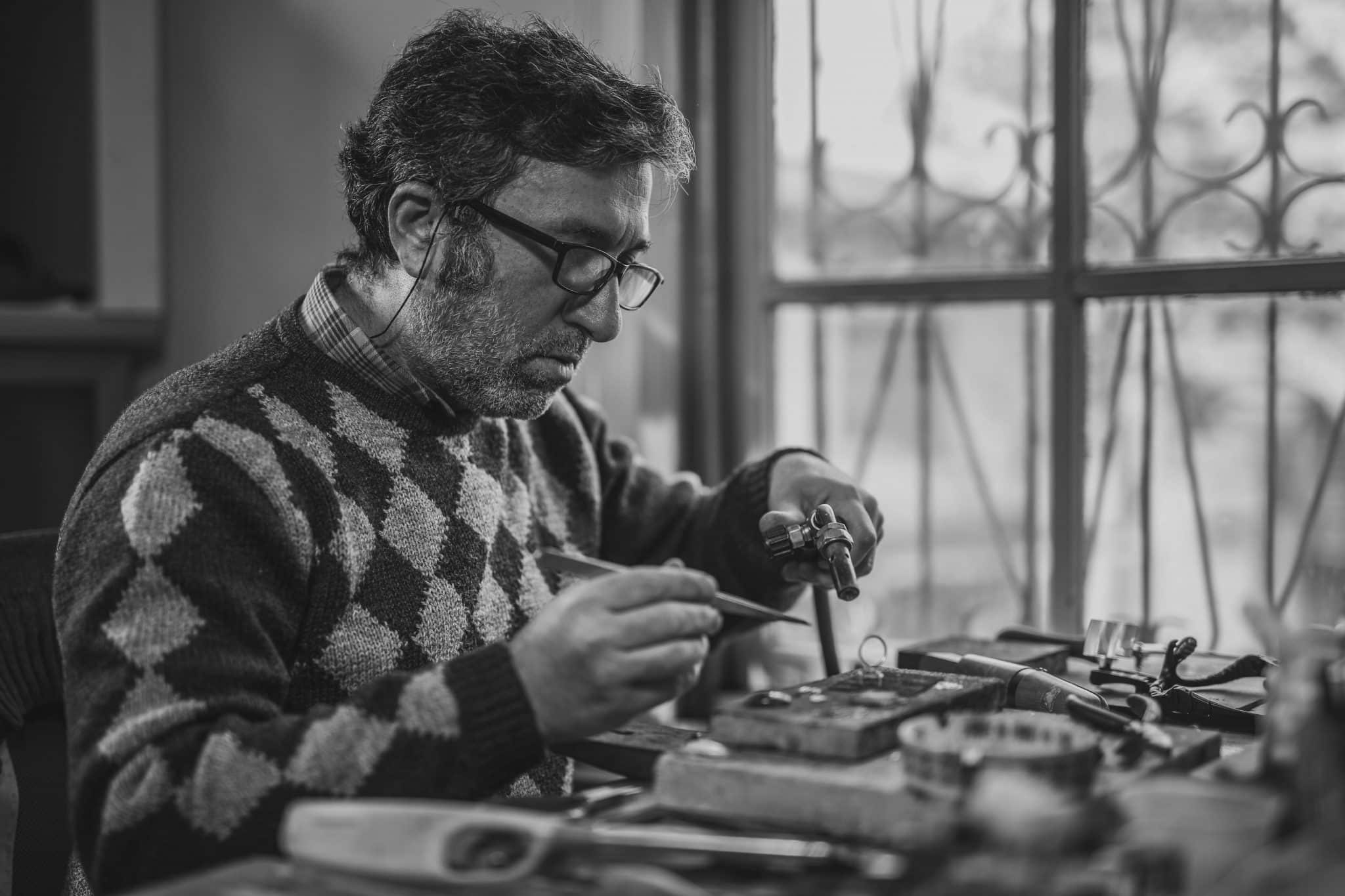Tonya Parris: Inspiring Change and Lifting Up Future Tech Leaders

The former Wall Street Engineer giving back to underprivileged communities through STEM education
Here at Freedom, we love hearing about and being inspired by fearless figures blazing a trail through the world of technology. Even more so when they’re helping and supporting the next generation of great minds find their way to the industry! We know that companies where diverse talent feels included, tend to be more innovative, more productive, and more profitable, so we were excited to hear about the work being done by The Parris Foundation to help promote educational opportunities and foster awareness in STEM within low-income communities.
We were honored to interview Tonya Parris – President and Founder of The Parris Foundation: S.T.E.M.ulating Minds, to learn more about the work she’s doing to attract young people to STEM, helping to close the achievement gap and break the cycle of poverty in underprivileged communities.
Having grown up in Public Housing in the Bronx, Tonya followed her passion for technology and became the first in her family to attend college. She then pursued a career as a Software Engineer in the Financial Services Industry where she lived amidst the few women on Wall Street who had global responsibility in the Information Technology Application Development space. We caught up with Tonya to learn more about her incredible career, and the importance of making STEM careers a viable option for all.
Can you tell us a little bit about how and why you became inspired to work in the Tech Industry? Which parts of your personal experience particularly influenced you to later found STEMulating Minds?
When I was a little girl, we had one Tandy TRS-80 in my primary school library. We were told that we can come to the library at recess to explore. So, I explored every day. I was intrigued by what I saw in a 10-minute demonstration and at age 9, I committed to learning everything about computers and what they do. I went to a commercial education high school in the heart of Manhattan Island in NYC. I graduated high school and entered undergrad with 4 programming languages under my belt – something that may be common these days, but in the late 80’s not so much!
My Wall Street experience was both fulfilling and frustrating… I loved my job but I had to be at least twice as good to get equal treatment.
You worked for many years as one of the few female software engineers on Wall Street, and one of the only female engineers that had global responsibility in the ITAD space. Could you tell us what this was like?
My Wall Street experience was both fulfilling and frustrating. I loved my job but it did not take long for me to realize that I had to be at least twice as good to get equal treatment – while I was well paid, I never received equal pay. I realized that once I became a VP, delivering compensation for my team. What reason would an analyst on my team make more than me? For over 20 years, I sat shoulder to shoulder with the best and brightest at premier financial services firms all over the globe. I managed global teams, I lived abroad; I was like an internal consultant sent to troubled areas in different departments to mitigate risks and challenges. Most people knew a significant amount about a single business area and their growth was siloed within that one space. For most of my career, my managers figured out that I wouldn’t stay long if they did that to me. I had a unique opportunity to grow across multiple business areas and learned a little about a lot. Useful for strategic planning and company-wide initiatives. I’d stay on a team for an average of 18 – 30 months and then get sent onto the next challenge.
You’ve had great success in your career. How were you able to overcome barriers faced in STEM due to the lack of Diversity and Inclusion (D&I) in the tech industries?
I was instrumental in introducing and having each firm I was an employee of, engage with STEM D&I organizations like NSBE, SHPE and SWE. I was instrumental in creating and leading the very first affinity groups at Goldman Sachs. I was bold and forthright and I was not afraid to speak my mind about what was missing around me. I was instrumental in executing change way before participation in affinity groups became a performance review criteria. I was committed to executing and being the change I wanted to see without fear of how it would be received by those more senior in title. I found common ground to create connection and rapport with those that were open to hear me.
My commitment to being of service to others comes out of my personal awakening that life is about Love, Connection, and Contribution. My own personal journey out of poverty began with an education in STEM.
What spurred your commitment to be of service to others, and why is it so important to attract young people from all backgrounds to STEM education?
My commitment to being of service to others comes out of my personal awakening that life is about Love, Connection, and Contribution. My own personal journey out of poverty began with an education in STEM. So, I’m 100% committed to reaching back and sharing the winning formula to overlooked youth who do not have the exposure or resources to end generational trauma and poverty. Instead of perpetuating the cycle and bringing them fish (through government programs like public assistance and housing), I’m teaching them about their magic, their power, and their agency to fish on their own and teach the next generation the same.

What are some of the positive changes you’ve seen regarding routes to STEM for students from disadvantaged socio-economic backgrounds? How are things different now from when you were embarking on your studies and career?
I see youth finding and owning their voice, aptitude and power as they are often disregarded and discarded as not enough, unworthy and unintelligent. When I was growing up in the STEM space, I was considered an anomaly. Today, youth are a lot more intrigued by STEM because it’s more prevalent.
What problems are we seeing in the world today that can be attributed to the lack of diversity and equity within Tech and other STEM fields?
I am seeing jobs going to other countries not necessarily because it’s cheaper but because we are not training enough people with the skills required to keep jobs here. I’m seeing other countries surpass the U.S. in STEM fields because they take it seriously.
As for challenges around STEM with diversity and equity, the biggest one is the digital divide. With the pandemic, that divide has widened because many of the youth who live in poverty don’t have a computer. They may have access to a smartphone but it’s challenging for anyone to learn that way. Not every school is giving out laptops and tablets to their students. Schools in low-income areas don’t have the same budget as those in wealthy areas.
When companies hire the same people that have the same perspectives, they limit their ability to problem solve and come up with creative solutions. Companies with diverse employees outperform those that are homogenous, and most candidates want to work at diverse firms, too.
What changes or policies would you like to see companies make that would allow for a more inclusive and diverse industry.
Companies need to hire diverse candidates instead of hiring the same people that have the same perspectives. They limit their ability to problem solve and come up with creative solutions. Companies with diverse employees outperform those that are homogenous. Most candidates want to work at diverse firms as well.
Could you tell us about the Parris Foundation and which of its’ achievements you are most proud of?
The Parris Foundation: S.T.E.M.ulating Minds supports youth out of poverty through education by providing interactive and engaging extended learning opportunities in Science Technology Engineering and Math (STEM). We offer continuous support for students from middle school through postgraduate education. We create a safe space for youth to learn in an environment that is loving and kind, where everyone gets that they are worthy and they matter. I’m most proud of supporting families to bridge the gap in the digital divide, and exposing STEM studies and careers to our youth who chose that route due to our program and are now the first in their family to attend college.
Click to help support the next generation of STEM leaders by making a donation!

Tonya is the President and Founder of The Parris Foundation: S.T.E.M.ulating Minds as well as CEO of The Parris Group – a technology, financial, professional, and personal development consulting and coaching firm that supports social and emotional learning, intelligence & responsibility seminars, workshops, and retreats.
You can follow the great work being done by Tonya and The Parris Foundation on Facebook, Instagram, Twitter, and LinkedIn; or help support by volunteering or partnering with the program, or making a donation.



